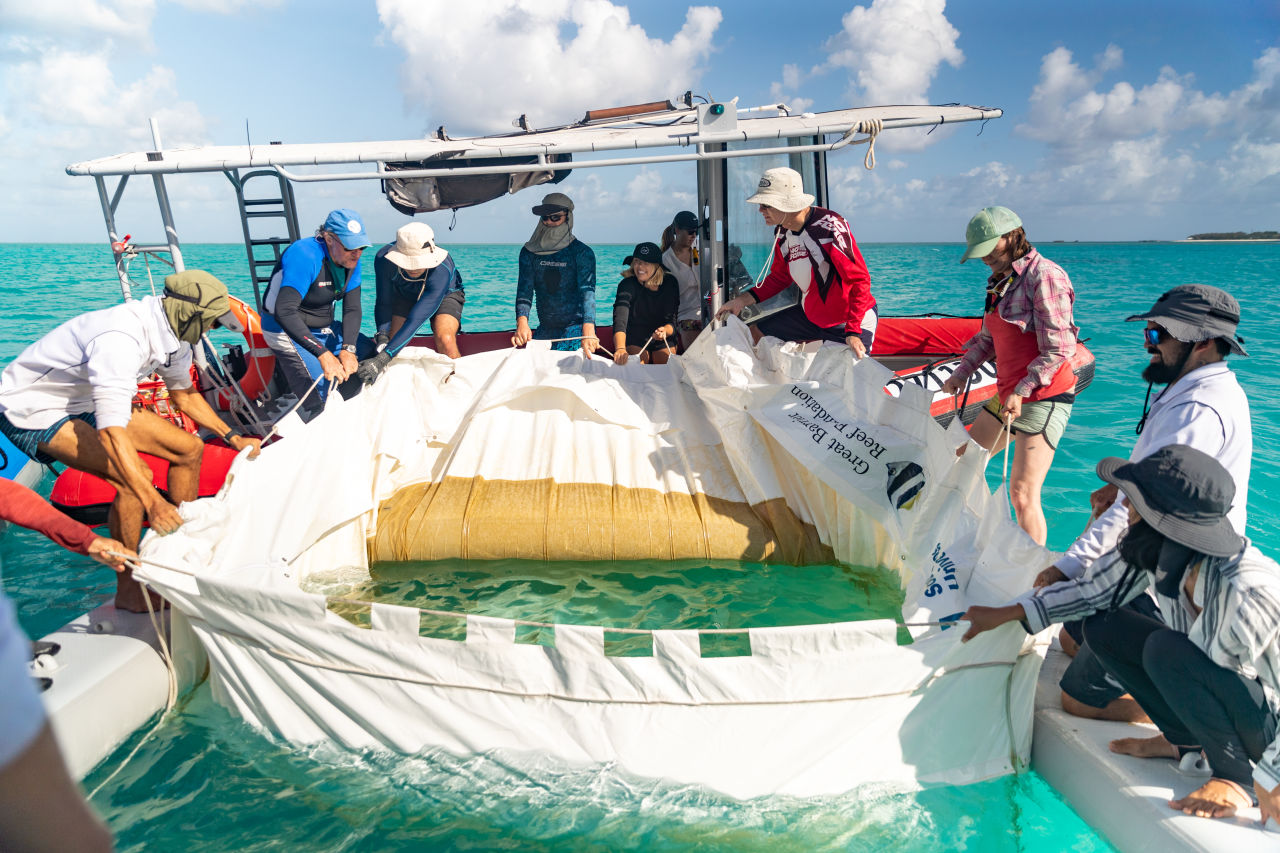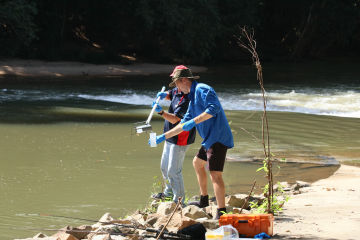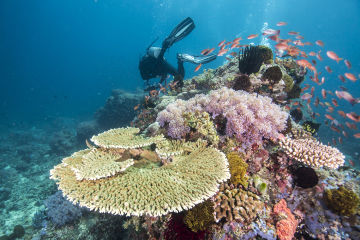Explainers ·
BOM warns of severe cyclone season this summer
Hurricanes and cyclones are increasing in frequency and intensity, fuelled by warming oceans. What does this mean for the Great Barrier Reef?

Tropical storms such as cyclones, hurricanes and typhoons are seasonal events. However, the increased frequency and severity of these storms globally are cause for concern. Experts attribute this increase to climate change, which is causing ocean temperatures to rise and fuelling more powerful extreme weather events around the world.
In Australia, the Bureau of Meteorology has forecasted a heightened risk of severe cyclones this summer due to warmer-than-average sea temperatures. There are concerns that Australia is facing one of the hottest summers on record with the upcoming storm season (November to April) expected to bring more frequent and intense cyclones to the Great Barrier Reef region. This will have significant implications for the Reef’s delicate ecosystems, already stressed by climate-related threats.
#What’s the difference between cyclones, hurricanes and typhoons?
All three terms refer to tropical storms and the only difference between them is their location. They’re known as cyclones when they form over the South Pacific and Indian Ocean, and hurricanes when they occur over the North Atlantic, central North Pacific and eastern North Pacific. Tropical storms that form in the Northwest Pacific are called typhoons.
#When does a weather event officially become a cyclone?
A tropical storm is declared and given a name when wind speeds consistently reach 63kph. Their intensity is rated on a five-point scale, with category five being the strongest.
Cyclone Debbie, which made landfall in 2017 near Airlie Beach, was a category four storm that caused widespread damage across the Whitsundays. Wind gusts reached 263 km/h.
#What happens to the Reef during severe storms and cyclones?
These strong winds whip up very large, powerful waves and when they break over coral reefs, they can tear corals from their footing and turn large sections of the reef to rubble. Research by the Australian Institute of Marine Science (AIMS) shows cyclones can cause damage up to 1,000km away from their path.
Climate change is causing higher temperatures on land and in our oceans, which is increasing the frequency and intensity of tropical storms around the world. Coral reefs have the ability to recover naturally from the impacts of cyclones, hurricane and typhoons, but it can take a decade or more. When tropical storms occur in quick succession, there often isn’t enough time for reefs to recover before they’re battered by the next one.

Reefs in the Whitsundays suffered damage during Cyclone Debbie in 2017. Credit: Gary Cranitch, Queensland Museum
#What are we doing to help the Reef recover from storm damage?
Cyclones leave behind rubble beds of dead coral skeletons and rock fragments that constantly move with the tides and waves. It’s much harder for baby corals to settle and grow on unstable and moving surfaces and corals that do manage to settle can be killed as they tumble around. This makes it much harder for the Reef to naturally recover following a cyclone.
Over time, rubble beds eventually stabilise with the help of natural binders like encrusting algae and sponges to form a stable platform for new corals. But with increased bleaching events and storms the amount of rubble on the Reef is rising.
Where unstable rubble restricts new coral growth, we have two ways to promote reef recovery:
We use artificial tools like mesh netting and carbonate rocks to stabilise rubble so new corals can grow. We also replace damaged or lost reef with new structures, including specially-designed 3D shapes.
We capture coral spawn and rear baby corals in floating pools on the Reef. When they are ready, we deliver the babies to damaged areas to help repopulate them. We call this technique, Coral IVF.
We also collect broken pieces of coral from the sea floor and grow them in underwater nurseries. When they’re ready, we plant them on the Reef.

Researchers rearing baby corals in a floating pool near Heron Island.
#How you can help
You can help us restore and protect the Reef. Your donation will allow us to plant new corals on degraded reefs and continue developing the best techniques to stabilise rubble beds.
This summer, you can put time back on our side by helping to strengthen and restore the Reef.
Top image: Thomas Horig, Ocean Image Bank
#Related

Explainers ·
What is coral spawning?

Explainers ·
Uncovering hidden species with eDNA

Explainers ·
What is biodiversity and why is it so important?

Explainers ·
